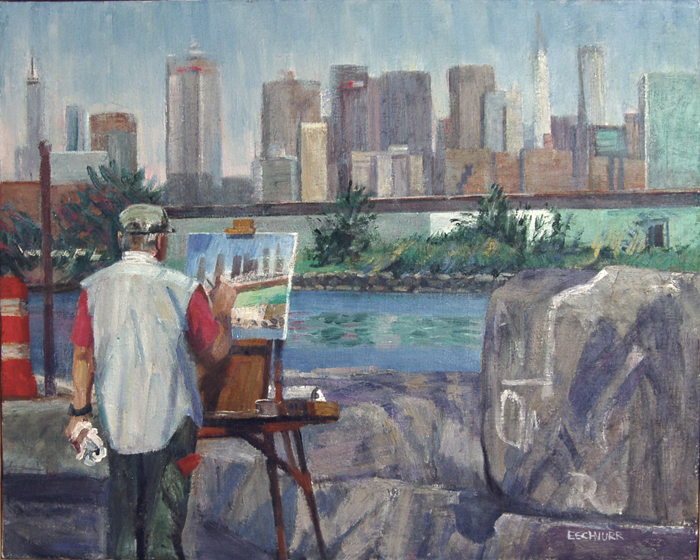An appreciation
of Vincent Pinto
by Mick Stern
Now that there is no master narrative to explain the collective direction
of contemporary art, we can stand back and see what endures in memory, and
over time Vincent Pinto's work is enduring.
Vincent Pinto is both artist and artisan, and the way he combines the two
roles reflects a sensibility all too scarce these days. For want of a better
term, I will call it classical. In Pinto's classicism, all the elements of
a work are in proportion. As artist, he expresses himself, but not at the
expense of craftmanship. As an artisan, he doesn't allow dazzling technique
to interfere with his personal vision.
In fact his technique is dazzling in its self-effacement and subtlety. In
his watercolor pictures of midtown and Cooper Union, it is the perspective
that makes the paintings so interesting and dynamic. His New York city building
facades are perfectly balanced in tone, composition and color, architecture
that invites visual meditation.
Insofar as he is a realist, he has affinities to Andrew Wyeth, Edward Hopper,
and the "Ashcan School" of New York painters of the 30s. But some
of his paintings, like the "City Personages," are surreal and poetic,
with compositions that seem about to explode into pieces.
In the "Domestic" section, Pinto manages to achieve the very difficult
task of making the mundane beautiful. Thanks to the warmth of his colors and
the close attention to detail, the interiors seem to breathe air and light.
But I am only gilding the lily, so to speak. Vincent Pinto's work doesn't
need explanation. It only needs attention.
Mick Stern is a poet and playwright who lives in Manhattan.
